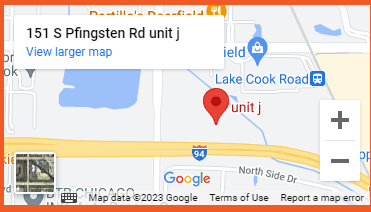Resurfacing a tennis court is essential for maintaining its playability and safety, but it can be a significant investment. Understanding the most cost-effective solutions for tennis court resurfacing can help facility managers, community centers, and private court owners maintain their courts without breaking the bank.
This article explores various affordable resurfacing options and offers practical advice on how to extend the life of your tennis court while keeping costs manageable.
Assessing the Need for Resurfacing
Before considering resurfacing solutions, thoroughly assess whether your tennis court requires it. Proper evaluation helps avoid unnecessary expenses and ensures that resurfacing is done only when needed. Here are key signs that indicate your court might need attention:
- Cracks: Small cracks can evolve into larger fissures that affect the flatness of the playing surface.
- Blisters and Peeling: These often result from underlying moisture issues or aging surface material, which can diminish the quality of play.
- Fading Lines: Over time, court lines may fade, leading to poor visibility and potential confusion during play.
- Surface Texture Changes: Noticeable changes in the texture of the court surface can alter ball bounce and speed, impacting game quality.
These symptoms not only make the court look worn but can also pose safety hazards to players. Consulting with a professional can help determine the extent of the damage. Experts can assess whether a partial resurfacing will suffice or if a full overhaul is necessary, considering factors such as:
- Age of the Court: Older courts may require more extensive repairs.
- Usage Frequency: High-traffic courts might wear out quicker and need more frequent resurfacing.
- Previous Maintenance: Well-maintained surfaces might only need minor touch-ups.
This evaluation is crucial in planning an effective resurfacing strategy that ensures both cost efficiency and safety.
Cost-Effective Resurfacing Options
Acrylic Resurfacing Systems
Acrylic-based coatings are among the most cost-effective solutions for residential indoor tennis court resurfacing. These systems can fill small cracks and level out the surface, providing a refreshed look and restored functionality. Acrylic coatings also offer excellent UV resistance, helping to prevent color fading and material degradation over time.
Cushioned Systems
For courts that require more substantial repair or those looking to improve player comfort, cushioned systems are an affordable alternative. These involve the application of multiple layers of cushioning material before the final surface layer is applied. While slightly more expensive than basic acrylic options, cushioned systems provide better shock absorption, reducing the risk of injuries and enhancing the playing experience.
Recycled Materials
Using recycled materials for the base layers of the court can significantly reduce the cost of resurfacing. Rubber and other flexible materials are often recycled into base layers that provide excellent drainage and durability. This not only lowers resurfacing costs but also contributes to environmental sustainability.
Budgeting and Planning
Proper budgeting and planning are key to cost-effective tennis court resurfacing. Consider the following steps to manage costs effectively:
- Request Quotes: Whenever possible, request quotes to compare prices and services. This will help you better consider pricing and ensure you get the best deal for the work.
- Schedule Off-Season: Scheduling your resurfacing project during the off-season can lead to lower costs, as contractors may have more availability and could offer discounts during slower periods.
- Regular Maintenance: Investing in regular maintenance can extend the life of the resurfacing work and delay the need for another expensive overhaul. This includes cleaning the surface regularly, addressing minor repairs promptly, and applying a UV-protective coating every few years.
Additional Cost-Saving Tips
- DIY Minor Repairs: For minor issues, consider doing the repairs yourself or with the help of your team. There are many high-quality DIY repair kits available that can fix small cracks and surface imperfections.
- Community Involvement: If resurfacing a community court, consider organizing a fundraising event or seeking sponsorships from local businesses. This can offset some of the costs and engage the community in maintaining their local sports facility.
- Long-Term Contracts: If you foresee needing multiple resurfacing projects (for instance, for several courts), negotiate a long-term contract with a single provider. This can often secure lower prices and better terms.
Conclusion
Tennis court resurfacing doesn’t have to be prohibitively expensive. With the right knowledge and approach, you can find affordable solutions that keep your courts in top condition without overspending. By choosing appropriate resurfacing methods, planning effectively, and engaging the community, you can ensure that your tennis courts remain a vibrant and safe place for everyone to enjoy.
Remember, investing wisely in your courts can save you significant money in the long run and increase the lifespan of your sports facilities. For expert guidance and professional service, consider consulting with Home Court Advantage, where we bring cost-effective solutions and high-quality workmanship to every project.

Nate Parsons is the owner of Home Court Advantage, a leading manufacturer and supplier of premium residential and commercial athletic courts based in Northern Illinois. With a strong background in therapeutic recreation and business from York College, Nate has excelled in the sports industry, from college tennis to national rankings in platform tennis. He has served as the Director of Racquet Sports at Glen View Club, President of the Professional Platform Tennis Association, and as a teaching professional in tennis, pickleball, and platform tennis. Nate is also the founder of Pickleball AI, a platform for tracking players and points, and Club Dink, a pickleball brand that brings fun to the game.











